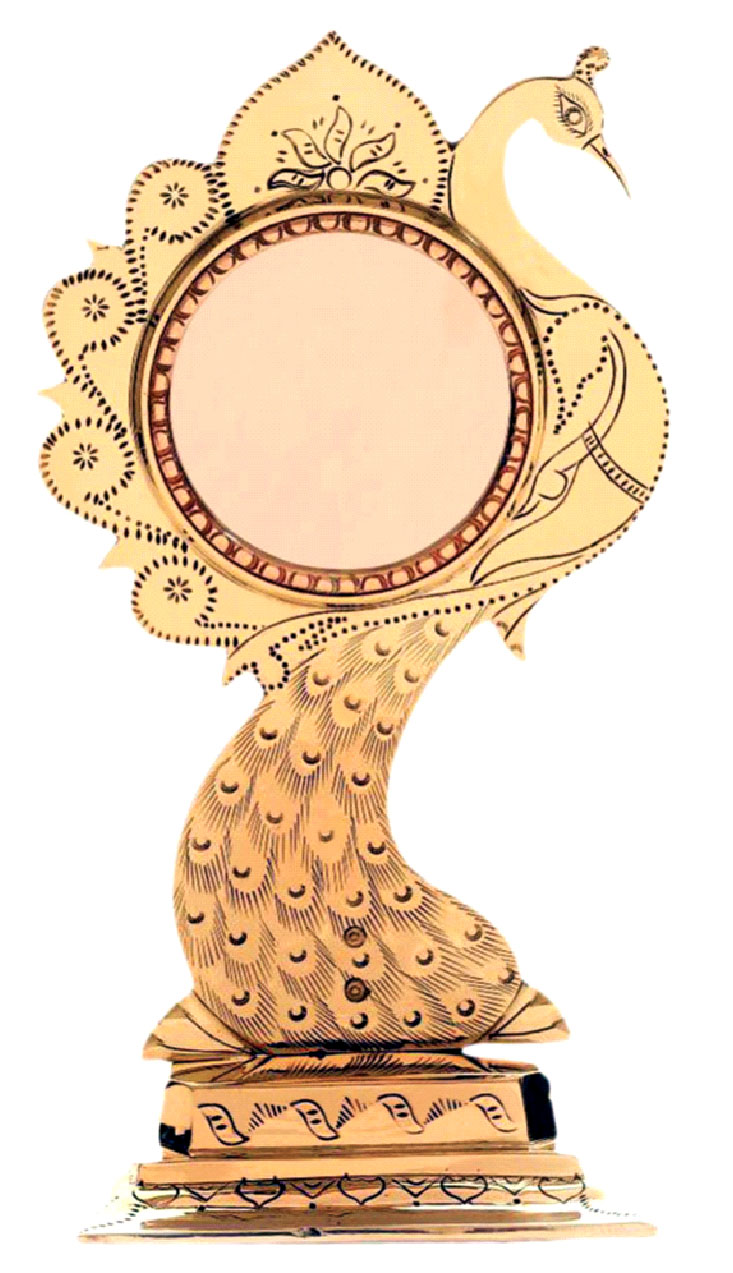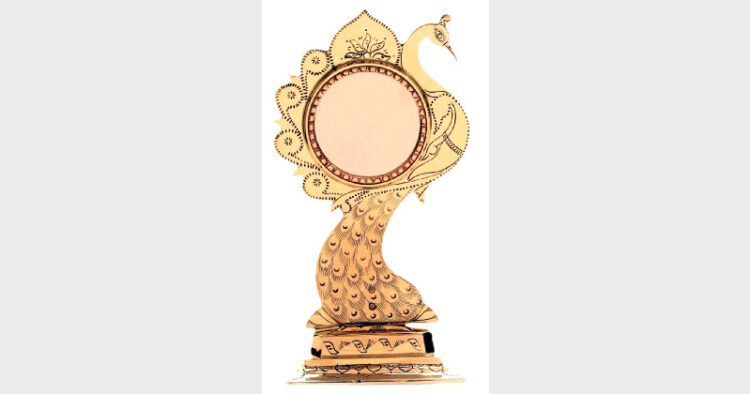 The art of making metal mirrors called Aranmula Kannadi in Kerala is exceptional on this planet and perplexed even scientists when it came to light a few centuries ago
The art of making metal mirrors called Aranmula Kannadi in Kerala is exceptional on this planet and perplexed even scientists when it came to light a few centuries ago
Prashant Pole
In the south of the strip-sized Kerala, but in the interior central region, lies a small and beautiful village–Aranmula. Situated at 116 Km from Thiruvananthpuram, though this village is not on national highway, yet it has acquired fame for many things. Aranmula, on the banks of Pampa River, is known for the boat race. Both domestic and international tourists flock here to watch Snake Boat Race.
Aranmula also boasts of a grand Sri Krishna Temple. This place has acquired place among the list of world heritage sites because of the Aranmula Parthsarathi Temple. It is believed that this is one of the 108 temples that Lord Parshuram built for Sri Vishnu. The famous Sabarimalai temple of Kerala is near from here. Both of them fall under the same district—Pathanamthitta. Aranmula Parthsarathi Temple is one of the stops of the grand procession that is taken out every year from Sabarimalai.
Aranmula is also famous for one more thing. It is the vegetarian meal. This meal, named Wala Sadhya, consists of 42 different food items and all of them are cooked in an extremely scientific manner, following the rules of Ayurveda and food science.
Perhaps as a result of the rich cultural and spiritual atmosphere around Aranmula, the Christians, as a reaction, are running a lot of programs here. The number of churches here is high and they organise a grand fair every here.
Nevertheless, Aranmula is famous for an entirely different thing from all of these. And it is the Aranmula Kannadi. The Malayalam word Kannadi means mirror! Thus, it means Aranmula Mirror. The speciality of this mirror is, it is not made of glass but of metal.
All over the world, mirror is equated with glass. Mirrors are made by laying layers of quicksilver on glass. The mixture of silver nitrate and sodium hydroxide in liquid form is mixed with a little sugar and heated. The layer of this mixture is laid on the back of glass and mirror is made. This is the common method of making mirrors. Mirrors ranging from low to excellent quality are manufactured by using specific chemicals and a special type of glass.
Of course, this method of making mirrors is just 150-200 year old. The method of making quicksilver layered mirrors was discovered in Germany. The first quicksilver layered mirror was made by German chemist Justus Liebig in about 1835.
Yet, the art of making mirrors is very old in the world. The oldest reference to mirror is found 8000 years ago in Astonia or today’s Turkey. Thereafter, there is reference to mirror having been found in Egypt. References are there also of use of mirrors in South America and China.
These mirrors were of different types. There are references of using stone, metal and glass mirrors. However, the mirrors made by metal or stones, without glass, were not of good quality. Mirrors found in Turkey were of obsidian type (glass made from the lava).
Bharat finds no mention in various research papers on mirrors or in places like Wikipedia. The reason being most of the written literature in Bharat was destroyed by the invaders. Shruti, Smriti, Vedas, Puranas and Upanishads etc. survived because of the oral tradition. However, our pre-historic and historic information was lost in the flow of time. Yet, we see a beauty looking at the mirror in her hand and doing make-up in the pictures of Ajanta or Khajuraho. Thus, it is clear that mirrors were used in India for thousands of year.
The glass and mirrors from Belgium are very famous in the world today. However, the mirrors that can give a run for their money are produced in Aranmula. Mirrors, those give a clear and transparent reflection!
These mirrors are made from some compound metals, but it is still shrouded in secrecy as to exactly which metals are used for the same. The metallurgists have analysed the mirrors and said that mirrors like these that compete with those from glass-mirrors of Belgium are made after a metal from specific mixture of copper and tin after polishing them for many days. And they are known as Aranmula Kannadi.
The mirrors made at Aranmula in Kerala are unique because such mirrors are made nowhere else in the world. Rather, no scientist has been able, even in the 21st century, to have the technique of making mirrors like these with their lucidity and clarity of reflection. In the prevalent mirrors worldwide, the light is reflected from behind. However, it happens from front in the Aranmula Kannadi and this reflection is clean and clear. A large 45-inch Aranmula Kannadi is kept in the British Museum at London which has become the point of attraction of the tourists.
The process of making these mirrors is a well-kept secret of a group of families. Therefore, no other person besides these families is able to make them. It is said that the King of Aranmula had invited eight families, expert in iconography, for the renovation of Parthsarathi (Sri Krishna) Temple there a few centuries ago. These families had the technique to make the metal mirrors. No concrete information is available as to how these families, that were expert in temple architecture, came to posses this technique. The only thing clear is that these families came to Aranmula from Tamil Nadu. They had the technology to make the metal blazing like glass, but perhaps they did not realise to make commercial use of it.
After the Aranmula temple was renovated, the families sat to think their future course and offered the king a crown made from blazing metal. The king liked it so much that he provided them land, capital and asked them to make mirrors. These mirrors were included in the eight marks of women”s marital status and since then these families adopted the profession of making metal mirrors.
These mirrors have a plethora of legends and stories behind them. It is believed that goddess Parvati used these mirrors first. This mythological tale is narrated faithfully for centuries especially in the premise of Parthsarathi Temple of Vaishnavas.
Today, these mirrors are world heritage. All of them are made with hand only. It takes two weeks to make about a dozen mirrors. Generally, no two mirrors are similar. They hold tremendous attraction among the foreign tourists. The smallest of mirrors, one or one and half inch in size, costs more than Rs 1200 and 10-12 inch tall mirrors are sometimes sold many a times for 20-25 thousands. Many corporate companies use them as gift items. n













Comments